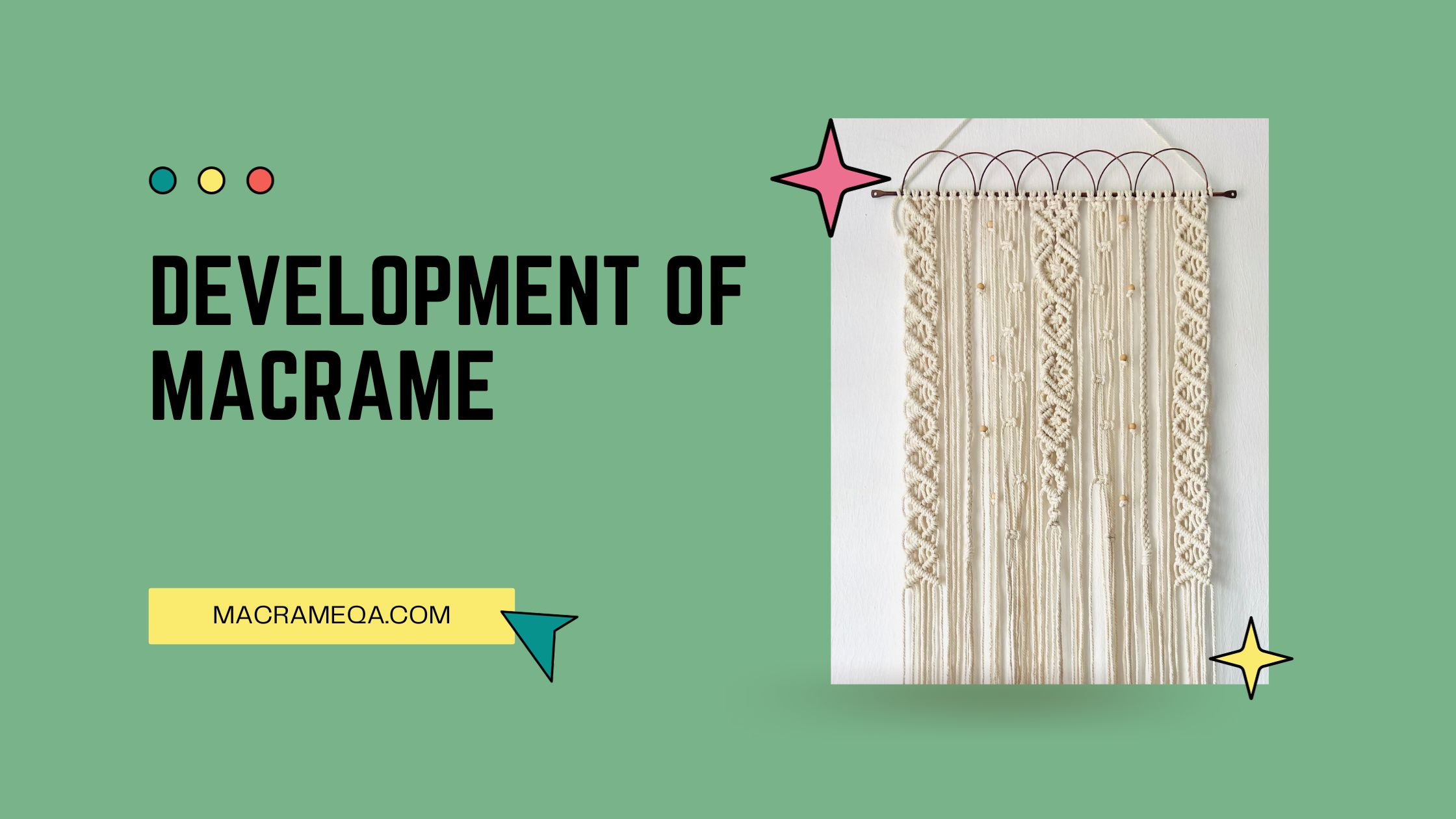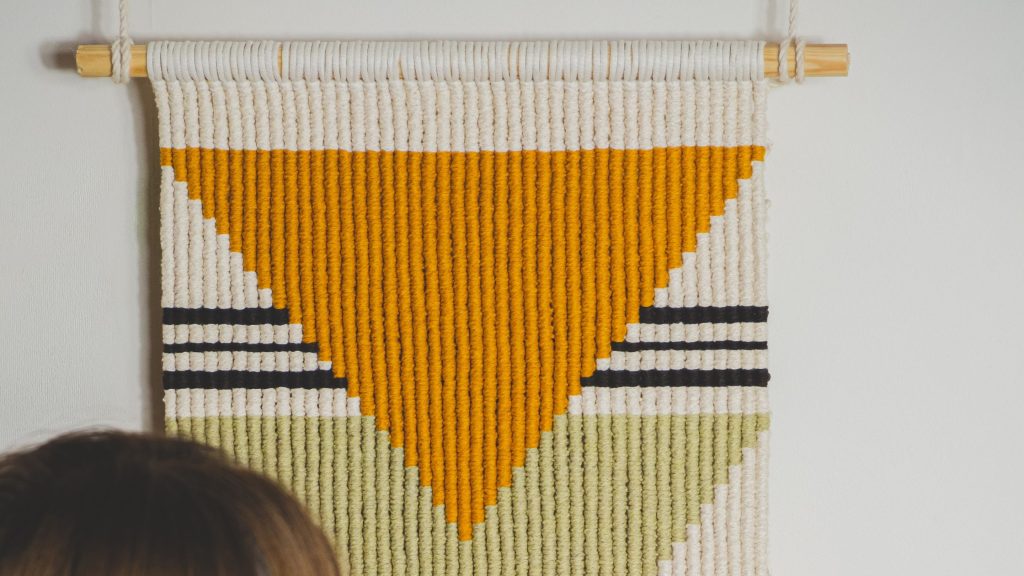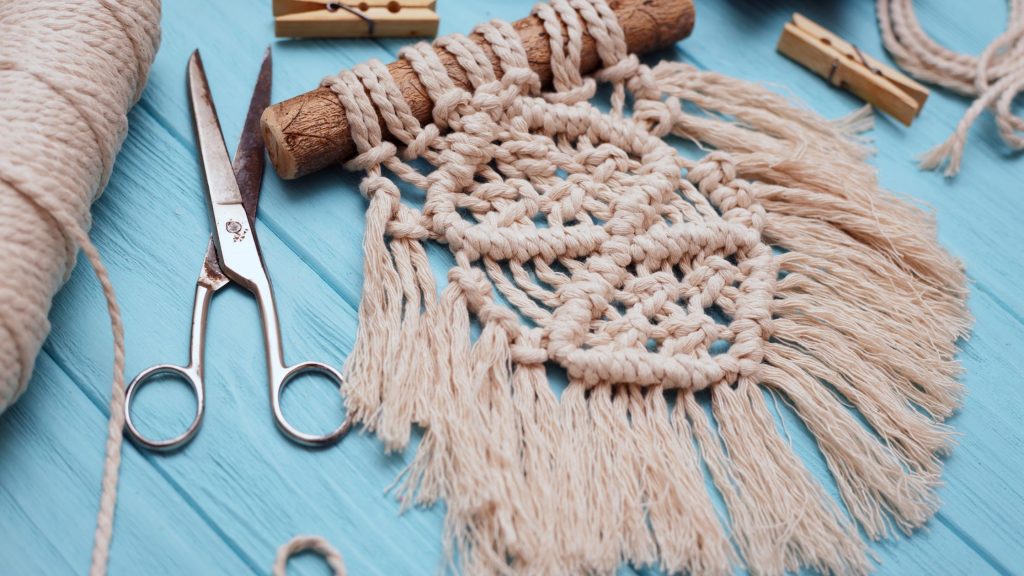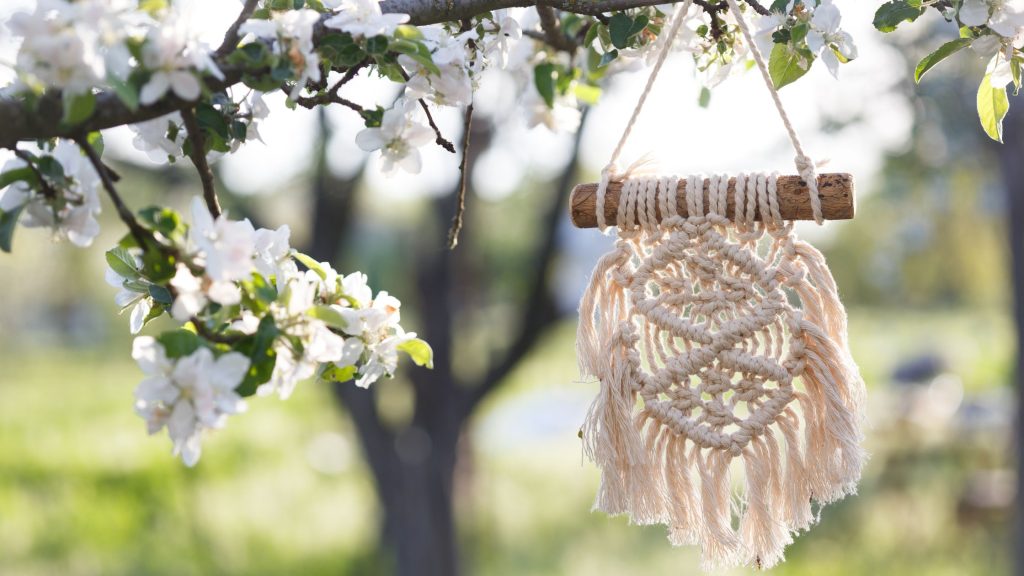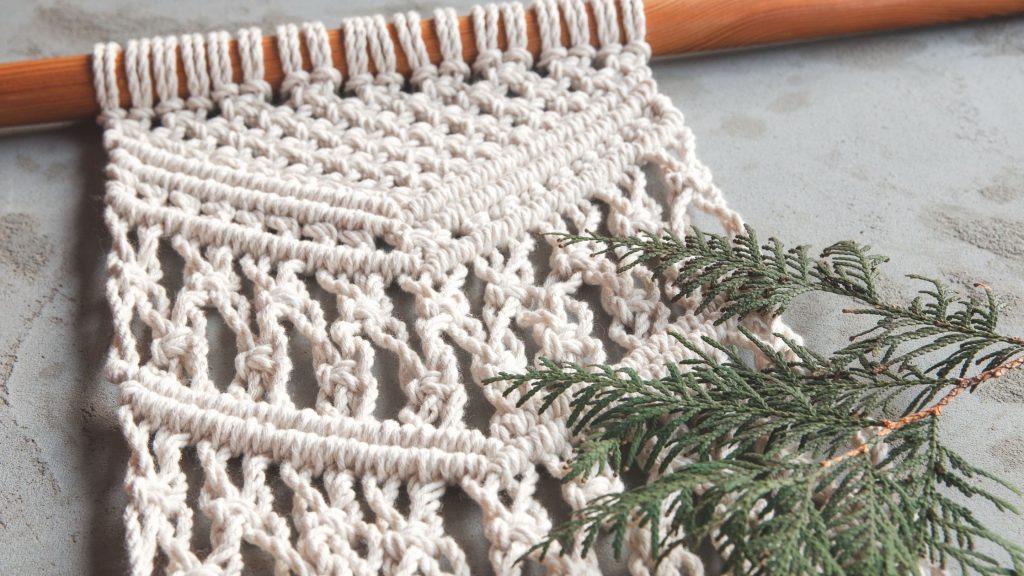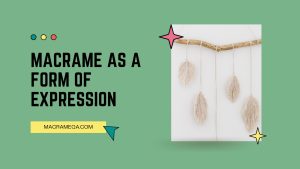Macrame, the intricate art form of knotting cords to create decorative textiles, has a rich history that has been shaped by various significant events. From its humble origins in ancient times to its revival in the 1970s, macrame has been influenced by cultural exchanges, exploration, and artistic movements throughout history. These events, like the Silk Road trade routes, the exploration of the Americas, and the rise of the bohemian aesthetic, have all played a part in the evolution of macrame into the captivating art form we know today.
The Origins of Macrame
Macrame, a form of textile art, has a long and fascinating history that spans different cultures and periods. Its origins can be traced back to ancient times when various techniques were developed and refined. The influence of Arabian weaving techniques and Chinese knotting played a significant role in shaping the art of macrame as we know it today.
The Ancient Origins
The art of macrame has ancient origins that can be traced back thousands of years. It is believed to have originated in the Arabian Peninsula, where Bedouin tribes used macrame techniques to create intricate and durable textiles. These textiles were not only functional but also served as a form of expression and cultural identity.
The Influence of Arabian Weaving Techniques
Arabian weaving techniques played a crucial role in the development of macrame. The intricate weaving patterns and knotting techniques used by Arabian weavers were later adapted and evolved into macrame. This influence can be seen in the complex and beautiful knot designs used in macrame, which require skill and precision to create.
The Influence of Chinese Knotting
Chinese knotting is another significant influence on the development of macrame. Chinese knotting is an ancient decorative art form that involves creating intricate knots using various techniques. This art form has a rich history in China and was used for both decorative and functional purposes.
The Art of Chinese Knotting
Chinese knotting is considered an art form in its own right, with a long-standing tradition dating back centuries. The intricate and elaborate knots created in Chinese knotting are not only visually appealing but also symbolic in nature. Different knots have different meanings, and they are often used to represent love, luck, and prosperity.
The Silk Road and Cultural Exchange
The Silk Road played a crucial role in facilitating cultural exchange between different civilizations, including the exchange of knotting techniques. As merchants and travelers journeyed along the Silk Road, they brought with them their knowledge and skills, including the art of Chinese knotting. This cultural exchange influenced the development of macrame, as Chinese knotting techniques were incorporated into the art form.
The Renaissance Period and Macrame
During the Renaissance period, macrame gained popularity as a decorative art form, particularly in Europe. The rise of lace and decorative knotting contributed to the growing interest in macrame, and Spanish influence played a significant role in its development. Macrame became increasingly intertwined with European fashion and was used to adorn clothing, accessories, and home decor.
The Rise of Lace and Decorative Knotting
The Renaissance period saw a surge in the popularity of lace and decorative knotting. Intricate lace patterns and delicate knot designs were highly prized and considered a symbol of status and wealth. Macrame, with its intricate knotting techniques, began to emerge as a form of decorative art, mimicking the elegance and intricacy of lace.
Spanish Influence on Macrame
Spain played a significant role in the development of macrame during the Renaissance period. Spanish sailors and explorers brought with them macrame techniques from their voyages and incorporated them into their own culture. The Spanish introduced new knotting techniques and designs, further enhancing the art of macrame in Europe.
The Use of Macrame in European Fashion
Macrame became increasingly popular in European fashion during the Renaissance period. The intricate knotting techniques allowed for intricate and elaborate designs to be incorporated into clothing and accessories. Macrame was used to create decorative trims, embellishments, and even entire garments. It became a symbol of high fashion and was favored by the elite and nobility.
Exploration and Trade
The Age of Exploration brought about a new era of trade and discovery, which had a significant impact on the development of macrame. As explorers embarked on their voyages, they encountered new cultures and brought back with them new ideas, including macrame techniques.
Macrame and the Influence of Explorers
Explorers such as Christopher Columbus and Vasco da Gama played a significant role in spreading macrame techniques to different parts of the world. As they journeyed to new lands, they encountered new cultures and artistic traditions, including macrame. This exposure to different techniques and styles influenced the development of macrame, as it merged with local art forms to create unique and distinctive styles.
Macrame as a Trade Good
Macrame also became a valuable trade good during this time. The intricate knotting techniques and beautiful designs made macrame highly sought after by traders and merchants. It became a popular commodity, with macrame textiles and accessories being traded across different regions. This trade further contributed to the spread and evolution of macrame.
The Influence of the Arts and Crafts Movement
In the 19th century, the Arts and Crafts Movement emerged as a response to the Industrial Revolution, emphasizing the value of handmade craftsmanship. Macrame found a place within this movement, as artisans sought to revive traditional crafts and celebrate the beauty of handmade objects.
The Rise of Handmade Crafts
The Arts and Crafts Movement sought to challenge the mass production and mechanization of the Industrial Revolution by promoting handmade crafts. Artisans and craftsmen embraced traditional techniques and materials, including macrame, as they sought to create unique and authentic pieces. The movement placed value on the labor and skill of the artisan, elevating handmade crafts to an art form in their own right.
Macrame in the Arts and Crafts Movement
Macrame became a prominent feature of the Arts and Crafts Movement, as artisans rediscovered and revived the techniques of the past. It was embraced as a decorative art form, with macrame plant hangers, wall hangings, and other home decor items becoming popular. Macrame’s versatility and ability to be personalized made it a perfect fit for the movement’s emphasis on individual craftsmanship.
The 20th Century and Macrame Revival
The 20th century marked a revival of macrame, particularly during the Bohemian movement. Macrame experienced a resurgence in popularity, with artists and designers incorporating it into their work. Macrame also found its way into modern design and fashion, further cementing its place in contemporary art and culture.
The Bohemian Movement and Macrame
The Bohemian movement of the 1960s and 1970s embraced macrame as a symbol of free-spiritedness and counterculture. Macrame became associated with the hippie movement, as artists and craftspeople created macrame jewelry, clothing, and home decor items. It became a popular medium for self-expression and personal style, reflecting the ethos of the time.
Macrame in Modern Design and Fashion
Macrame continued to evolve in the 20th century, finding its place in modern design and fashion. Designers embraced macrame’s versatility, incorporating it into clothing, accessories, and even furniture. Macrame techniques were used to create intricate patterns and textures, adding a unique and handmade element to contemporary designs. The revival of macrame in the modern era is a testament to its enduring appeal and adaptability.
Macrame in the Americas
Macrame has also found its place in the Americas, with Native American culture and South American textiles incorporating macrame into their traditional crafts.
Macrame in Native American Culture
Macrame has been a part of Native American culture for centuries. Native American artisans have used macrame techniques to create beautiful and intricate textiles, jewelry, and ceremonial objects. Macrame holds cultural significance within Native American communities and is often passed down through generations as a form of cultural heritage.
Macrame in South American Textiles
South American textiles also incorporate macrame techniques into their traditional crafts. Macrame is used to create patterns and designs in textiles, adding dimension and texture to woven fabrics. The bold and vibrant colors commonly seen in South American textiles, combined with macrame accents, create visually striking and unique pieces.
Macrame in the Modern Era
Macrame’s influence can be seen in contemporary art and design, where artists and designers continue to push the boundaries of what can be achieved with this ancient craft.
The Influence of Macrame in Contemporary Art
Macrame has experienced a resurgence in contemporary art, as artists explore the possibilities of this versatile craft. From large-scale installations to intricate wall hangings, macrame is being used to create visually stunning and thought-provoking pieces. The combination of traditional techniques with modern materials and concepts has cemented macrame’s place in the contemporary art world.
Macrame in Interior Design and Home Decor
Macrame has become an increasingly popular choice in interior design and home decor. Macrame plant hangers, wall hangings, and curtains add a touch of bohemian elegance to a space, creating a cozy and inviting atmosphere. With the rise of the “green” movement, macrame plant hangers have become particularly popular, offering a stylish and sustainable way to display houseplants. Macrame’s versatility allows it to be incorporated into various design styles, from minimalist to eclectic.
Macrame as a Form of Protest
Macrame has also been used as a form of protest and a symbol of resistance in various social and political movements.
Macrame in Feminist Activism
During the feminist movement of the 1970s, macrame was used as a medium for expressing feminist ideals and challenging societal norms. Feminist activists created macrame works that reflected their beliefs, often incorporating symbols and slogans associated with the movement. Macrame became a powerful tool for activism and a means of reclaiming traditional crafts as a form of female empowerment.
Macrame as a Symbol of Resistance
Macrame has also been used as a symbol of resistance in various social and political movements. In recent years, macrame wall hangings with messages of unity, peace, and equality have become common sights at protests and demonstrations. The use of macrame in this context highlights its ability to convey powerful messages and serve as a visual representation of shared values and solidarity.
Macrame’s Presence in Pop Culture
Over the years, macrame has made its way into the realm of pop culture, appearing in film, television, music, and subcultures.
Macrame in Film and Television
Macrame has made notable appearances in film and television, often associated with a specific era or aesthetic. In the 1970s, macrame was prevalent in home decor, and it is frequently featured in movies and TV shows set in that time period, invoking a sense of nostalgia. From bohemian beach houses to hippie communes, macrame captures the essence of certain characters and settings, adding a touch of authenticity to the visual storytelling.
Macrame in Music and Subcultures
Macrame has also found its place in music and various subcultures. In the realm of music, macrame was often associated with the folk and psychedelic rock movements of the 1960s and 1970s. Musicians and fans embraced macrame as part of their expressive and free-spirited lifestyle. In subcultures such as bohemian and surfer communities, macrame has remained a symbol of the alternative and non-conformist spirit. Macrame jewelry, clothing, and accessories serve as visual cues that signal affiliation with these subcultures.
Conclusion
As we can see, the development of macrame has been influenced by a diverse range of historical events, cultural exchanges, and social movements. From its ancient origins to its presence in contemporary art and pop culture, macrame continues to evolve and captivate people all over the world. Whether it’s used for decoration, self-expression, or as a symbol of resistance, macrame’s enduring appeal stems from its intricate knotting techniques, its ability to tell stories, and its connection to our shared human history.

